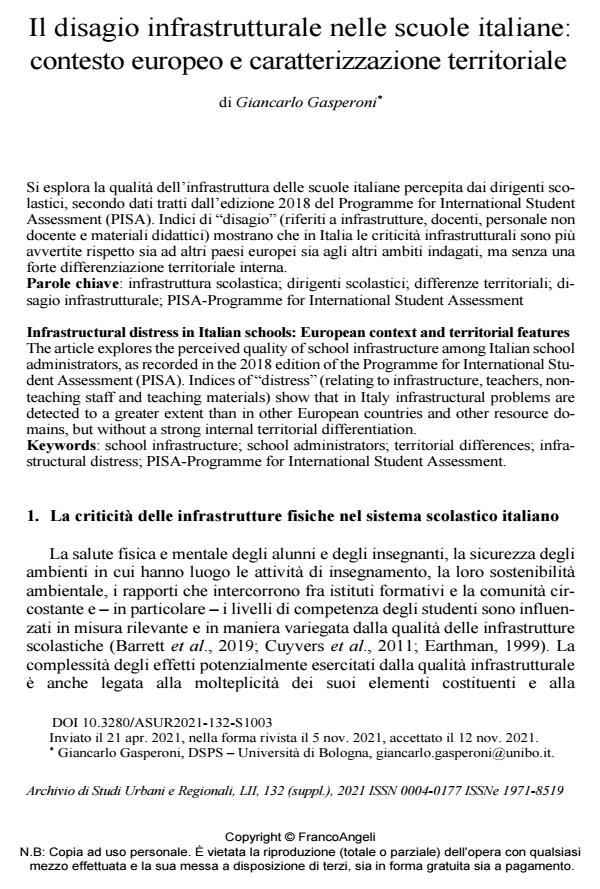Infrastructural distress in Italian schools: European context and territorial features
Journal title ARCHIVIO DI STUDI URBANI E REGIONALI
Author/s Giancarlo Gasperoni
Publishing Year 2022 Issue 2021/132 Suppl.
Language Italian Pages 17 P. 36-52 File size 243 KB
DOI 10.3280/ASUR2021-132-S1003
DOI is like a bar code for intellectual property: to have more infomation
click here
Below, you can see the article first page
If you want to buy this article in PDF format, you can do it, following the instructions to buy download credits

FrancoAngeli is member of Publishers International Linking Association, Inc (PILA), a not-for-profit association which run the CrossRef service enabling links to and from online scholarly content.
The article explores the perceived quality of school infrastructure among Italian school administrators, as recorded in the 2018 edition of the Programme for International Student Assessment (PISA). Indices of "distress" (relating to infrastructure, teachers, non-teaching staff and teaching materials) show that in Italy infrastructural problems are detected to a greater extent than in other European countries and other resource domains, but without a strong internal territorial differentiation.
Keywords: school infrastructure; school administrators; territorial differences; infrastructural distress; PISA-Programme for International Student Assessment.
Giancarlo Gasperoni, Il disagio infrastrutturale nelle scuole italiane: contesto europeo e caratterizzazione territoriale in "ARCHIVIO DI STUDI URBANI E REGIONALI" 132 Suppl./2021, pp 36-52, DOI: 10.3280/ASUR2021-132-S1003